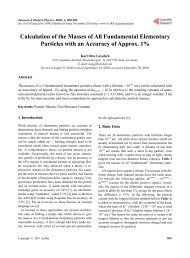Structure of the SAM-II riboswitch bound to S-adenosylmethionine
Structure of the SAM-II riboswitch bound to S-adenosylmethionine
Structure of the SAM-II riboswitch bound to S-adenosylmethionine
You also want an ePaper? Increase the reach of your titles
YUMPU automatically turns print PDFs into web optimized ePapers that Google loves.
6 µl <strong>of</strong> SHAPE enzyme mix (250 mM KCl, 167 mM Tris-HCl, pH 8.3, 16.7 mM<br />
DTT, 1.67 mM <strong>of</strong> each dNTP, and 0.33 units <strong>of</strong> Superscript <strong>II</strong>I Reverse Transcriptase<br />
(Invitrogen, Inc.)) was added and incubated at 52 °C for an additional five minutes.<br />
The reverse transcriptase reaction was s<strong>to</strong>pped by adding 1 µl <strong>of</strong> 4 M NaOH and<br />
transferring <strong>to</strong> a 90 °C sand bath for five minutes. Finally, <strong>the</strong> addition <strong>of</strong> 29 µl <strong>of</strong><br />
acid s<strong>to</strong>p mix (4:25 (v/v) mix <strong>of</strong> 1 M unbuffered Tris-HCl and s<strong>to</strong>p dye (85%<br />
Formamide, 0.5x TBE buffer, 50 mM EDTA, pH 8.0, with bromophenol blue and<br />
xylene cyanol added)). Samples were loaded on<strong>to</strong> a 12% denaturing PAGE gel and<br />
run for 5-6 hours at a constant 55 W. Gel images were obtained by scanning on a<br />
Typhoon phosphorimager (Molecular Dynamics).<br />
Band intensity was quantified using <strong>the</strong> SAFA program available from<br />
MatLab 11 . DMS data was averaged across three separate experiments run out on <strong>the</strong><br />
same gel. Band intensities from residues 50-53 corresponding <strong>to</strong> <strong>the</strong> series <strong>of</strong> four<br />
guanosines immediately 5’ <strong>to</strong> <strong>the</strong> AUG that were observed <strong>to</strong> be similarly modified in<br />
all reactions were used <strong>to</strong> normalize band intensities in each lane representing<br />
different reaction conditions. Data handling, calculation, and graphing were done in<br />
Micros<strong>of</strong>t Excel. All calculated and graphed data were subsequently correlated <strong>to</strong><br />
observations made on <strong>the</strong> original gel.<br />
NMIA data were also averaged across three experiments. Because no position<br />
in <strong>the</strong> RNA could be considered equally modified in all <strong>of</strong> <strong>the</strong> reaction conditions<br />
tested, and differences in loading, exposure time, and amount <strong>of</strong> radioactivity over<br />
multiple experiments run on multiple gels increased <strong>the</strong> variability in each<br />
measurement, we used a normalizing method based on <strong>the</strong> <strong>to</strong>tal radioactivity counts



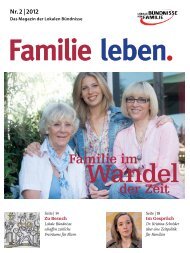
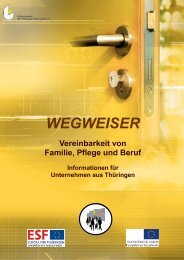
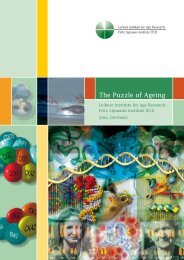

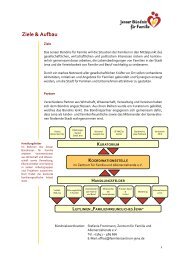



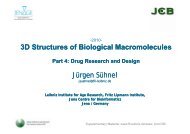
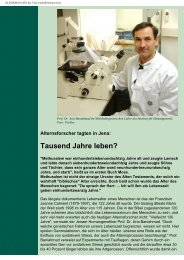

![Programm [pdf]](https://img.yumpu.com/20944039/1/184x260/programm-pdf.jpg?quality=85)
